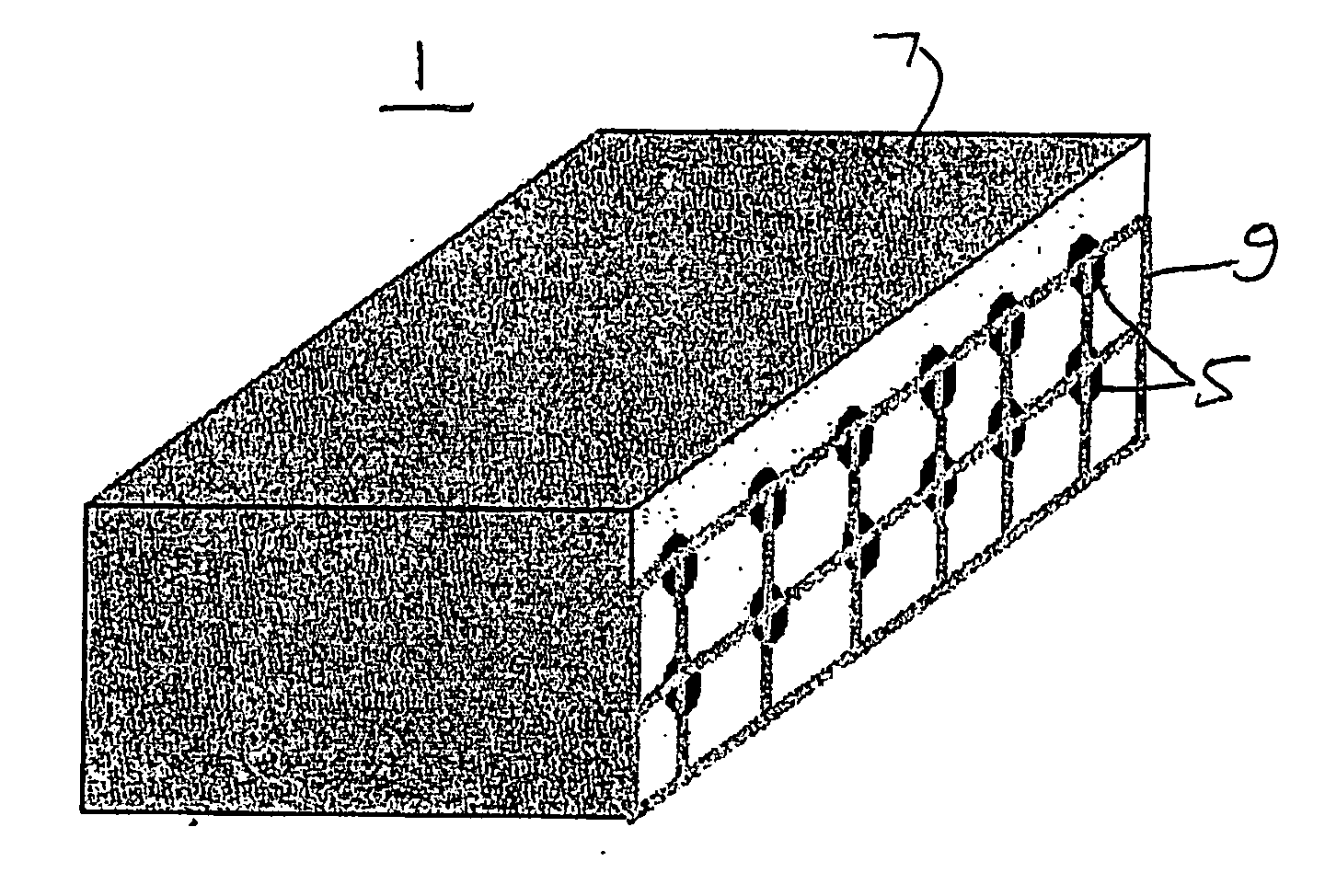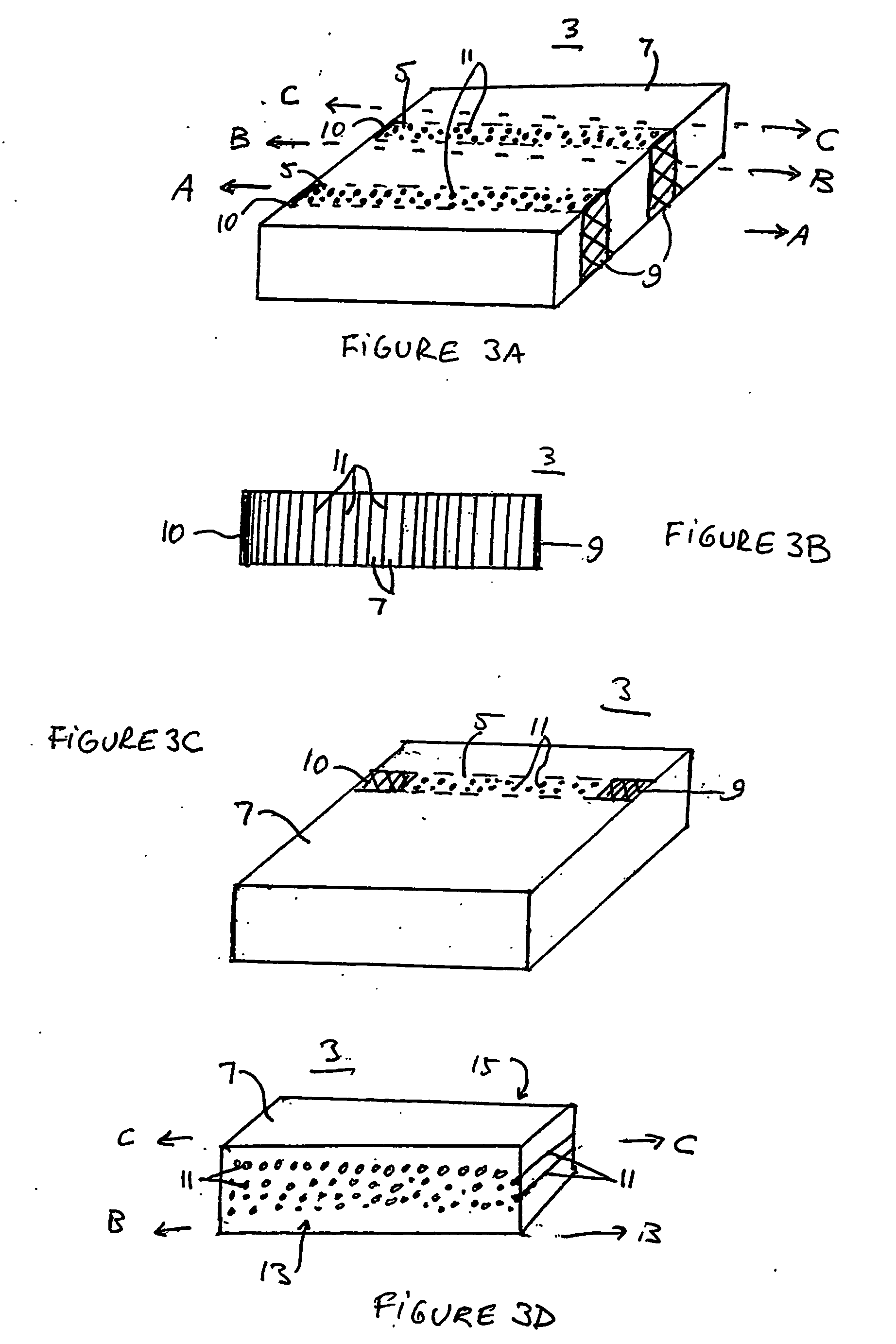Embedded nanotube array sensor and method of making a nanotube polymer composite
a technology of nanotube array and nanotubes, applied in the direction of instruments, conductors, electrochemical variables of materials, etc., can solve the problem of significant aircraft downtim
- Summary
- Abstract
- Description
- Claims
- Application Information
AI Technical Summary
Problems solved by technology
Method used
Image
Examples
first embodiment
[0014] A sensor system 1 of the present invention is shown in FIG. 1. The sensor system 1 includes a nanosensor 3 shown in FIGS. 1 and 2. The nanosensor comprises at least one conductive channel and preferably a plurality of conductive channels 5. Each conductive channel 5 comprises an array of substantially aligned carbon nanotubes or carbon nanofibers embedded in a matrix material 7. The term carbon nanotubes includes multiwalled and singlewalled carbon nanotubes. Preferably, the carbon nanotubes have diameters less than 1 micron and lengths greater than 1 micron. The term nanofibers includes carbon fibers other than nanotubes having a diameter less than 100 nm and which can carry current and / or be affected by changes in thermal environments.
[0015] In other words, a plurality of conductive nanotubes or nanofibers that are arranged close together in a shape of a channel in the matrix material 7 form the conductive channels 5. While the channels 5 are preferably linear in shape, the...
second embodiment
[0041] In the invention, the nanotube (or nanofiber) polymer composite material is produced by a peel apart method. While this method may be used to form the composite nanosensor 3 or antenna described above, it can also be used to form other nanotube / polymer composite devices, such as flat panel displays (i.e., plasma displays where the nanotubes arranged in predetermined positions are used as field emission electrodes), electronic devices, quantum wires, composite structural material and actuators. A peel apart method of forming the composite material is described, for example, in Emer Lahiff, et al., Nano Letters, vol. 3, no. 10 (Sep. 13, 2003) 1333-1337, incorporated herein by reference in its entirety.
[0042] The method of malting a carbon nanotube composite material according to the second embodiment includes providing an array of carbon nanotubes on a first surface of a substrate, where the carbon nanotubes in the array are located in a predetermined pattern, depositing a flow...
PUM
 Login to View More
Login to View More Abstract
Description
Claims
Application Information
 Login to View More
Login to View More - R&D
- Intellectual Property
- Life Sciences
- Materials
- Tech Scout
- Unparalleled Data Quality
- Higher Quality Content
- 60% Fewer Hallucinations
Browse by: Latest US Patents, China's latest patents, Technical Efficacy Thesaurus, Application Domain, Technology Topic, Popular Technical Reports.
© 2025 PatSnap. All rights reserved.Legal|Privacy policy|Modern Slavery Act Transparency Statement|Sitemap|About US| Contact US: help@patsnap.com



